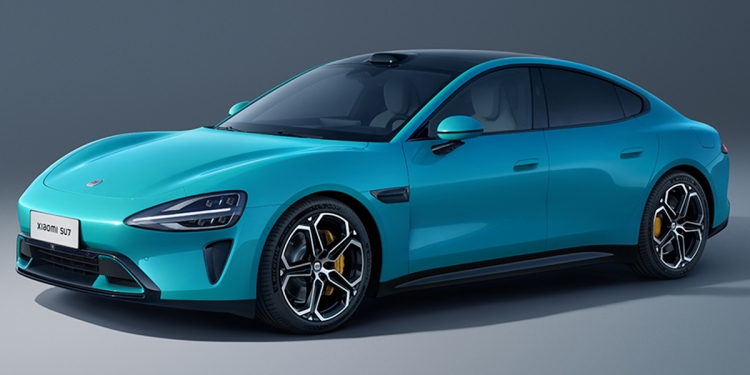Xiaomi’s first electric vehicle, the SU7 has finally made its first official appearance. Its CEO Lei Jun has previously said that the new EV is being designed to deliver performance on the same level as per Porsche Taycan Turbo with intelligent technologies inspired by the Tesla Model S even though it was essentially developed in less than three years.
While that sounds like a lofty target, the company is certainly not kidding about it. When Lei Jun went on the stage today to talk about EV technologies that Xiaomi is developing at the moment, he bookmarked the event by unveiling the official specs of the EV.
Xiaomi SU7 Max goes head-to-head against Porsche Taycan Turbo
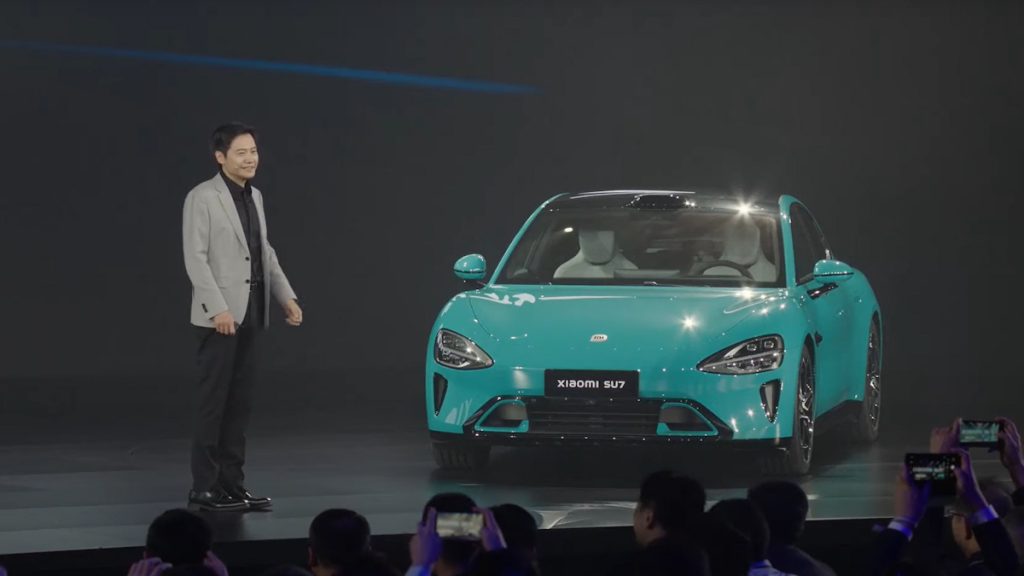
Instead of three variants that were mentioned in a regulatory filing earlier this year, Xiaomi has confirmed that the new SU7 will be released in two variants instead. Leading the lineup is the SU7 Max which carries a dual motor all-wheel drive setup that pushes a total output of 664hp alongside 838Nm of torque.
The setup allows the new electric sedan to go from 0 to 100 km/h in just 2.78 seconds which Lei Jun said is faster than Porsche Taycan Turbo. On stage, he also noted that the SU7 Max has a slightly higher top speed than Porsche’s EV at 265km/h.
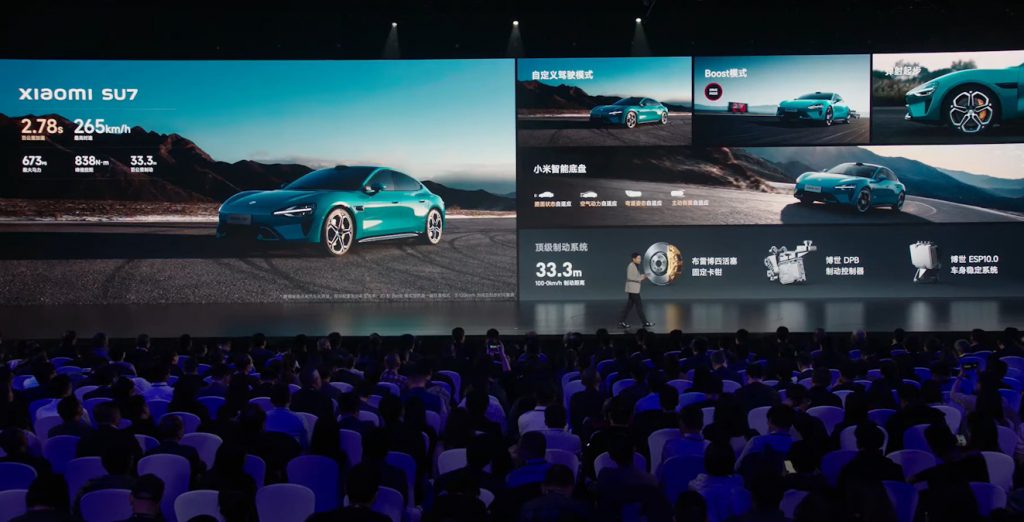
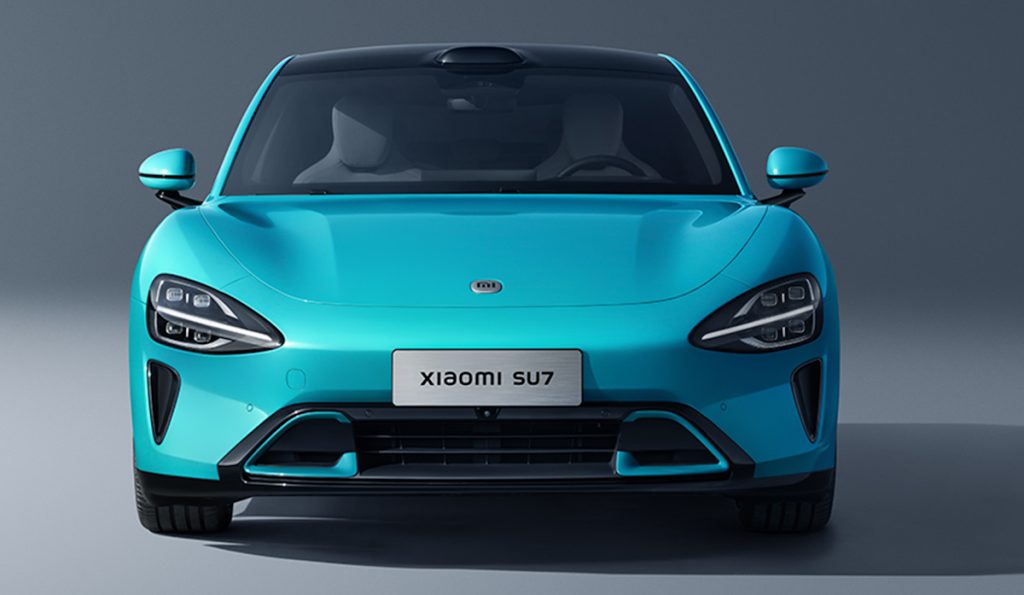
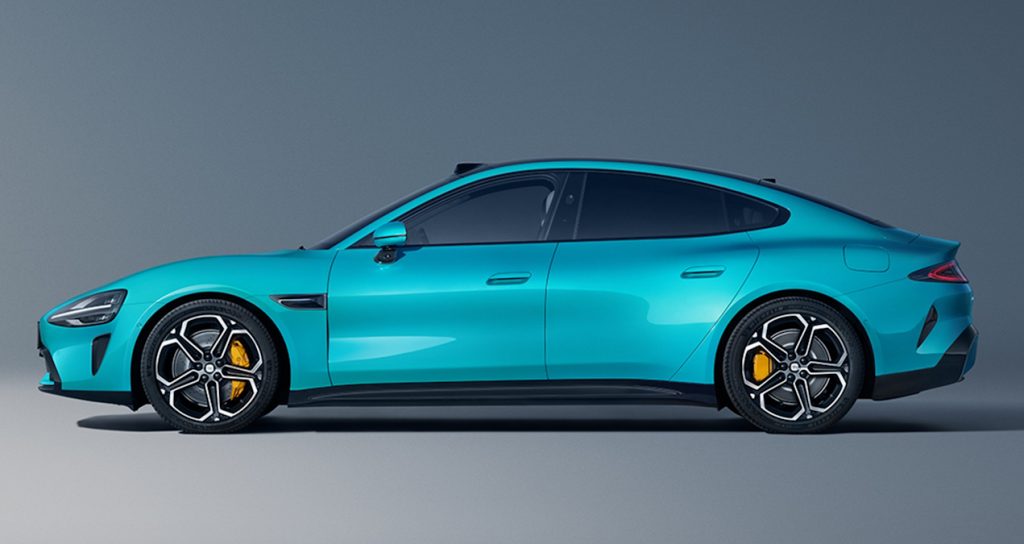

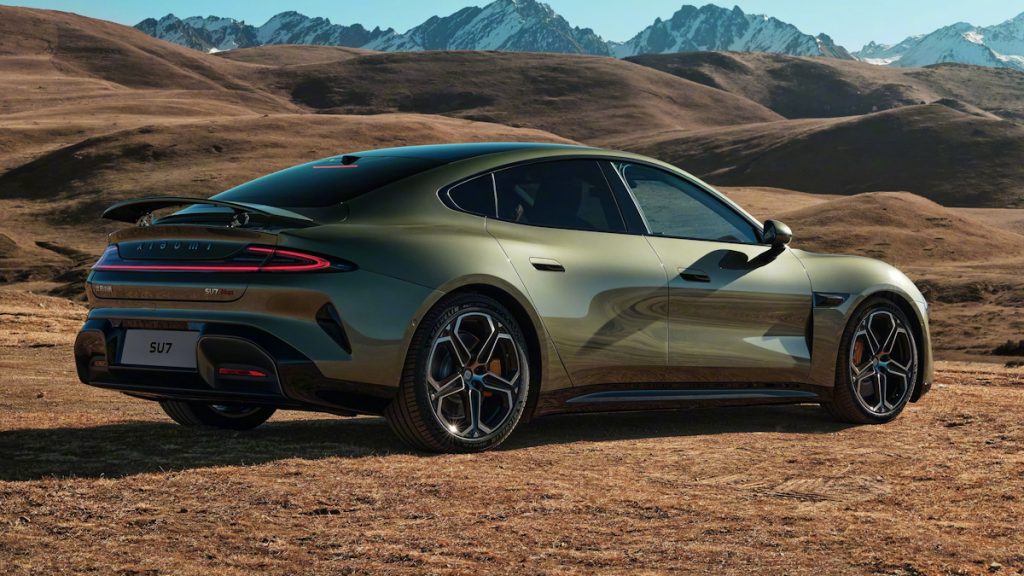
Xiaomi has also provided the SU7 Max with a Boost Mode that would unlock the EV’s torque over-boost function for 20 seconds. It also comes with Launch Control mode as well as active aero and adjustable rear wings.
To balance out the EV’s massive performance, the SU7 Max has been equipped with Brembo brakes. Working together with the Bosch DPB brake controller and ESP10.0 stability control system, Xiaomi claimed that the EV can go from 100km/h to a halt in 33.3 meters.
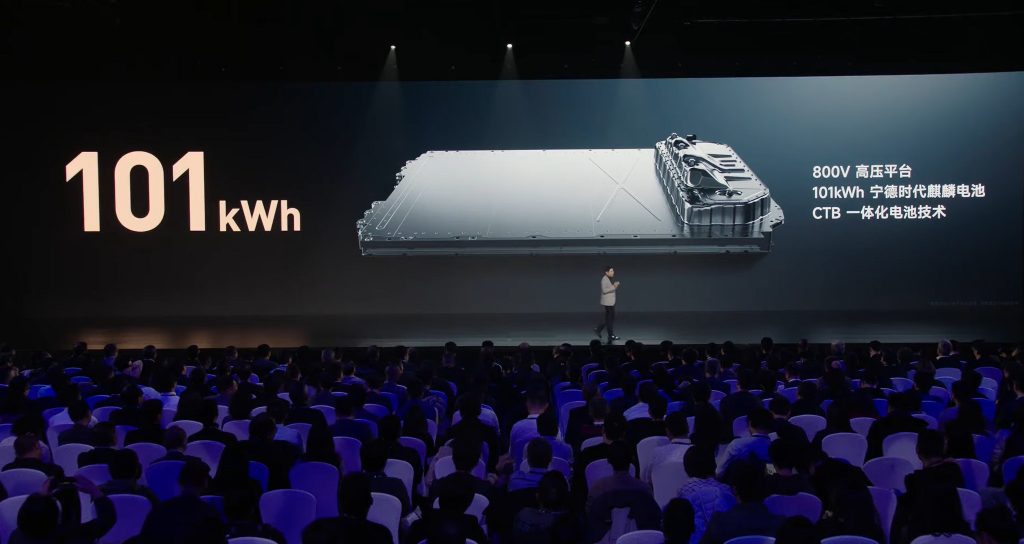
Powering Xiaomi’s new EV is a 101kWh battery that the tech giant has co-developed with CATL. This allows the SU7 Max to deliver 800km of range although this is according to the more lenient CLTC standard.
Xiaomi didn’t provide an exact AC and DC charging rate that the SU7 Max can support but it did say that the EV can obtain 510km of range with just 15 minutes of charging. It can even obtain 220km of range with just 5 minutes of charging and this is made possible by its 800V battery architecture which is something that also exists on Porsche Taycan.
Standard Xiaomi SU7 is not too shabby
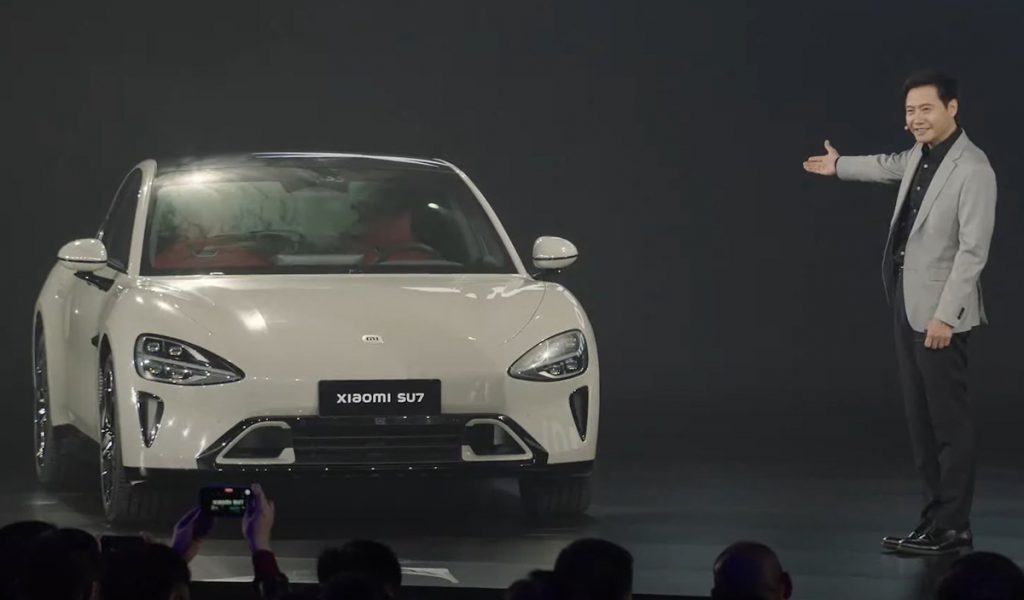
As for the standard SU7, it is equipped with just one electric motor. Being a performance-oriented model, it is not surprising that Xiaomi has decided to implement a rear-wheel drive for this variant.
The electric motor within the vanilla SU7 can deliver 295hp alongside 400Nm of torque which is still plenty of power for most users out there. It can also go from 0 to 100km/h in 5.28 seconds and reach a top speed of 210km/h.
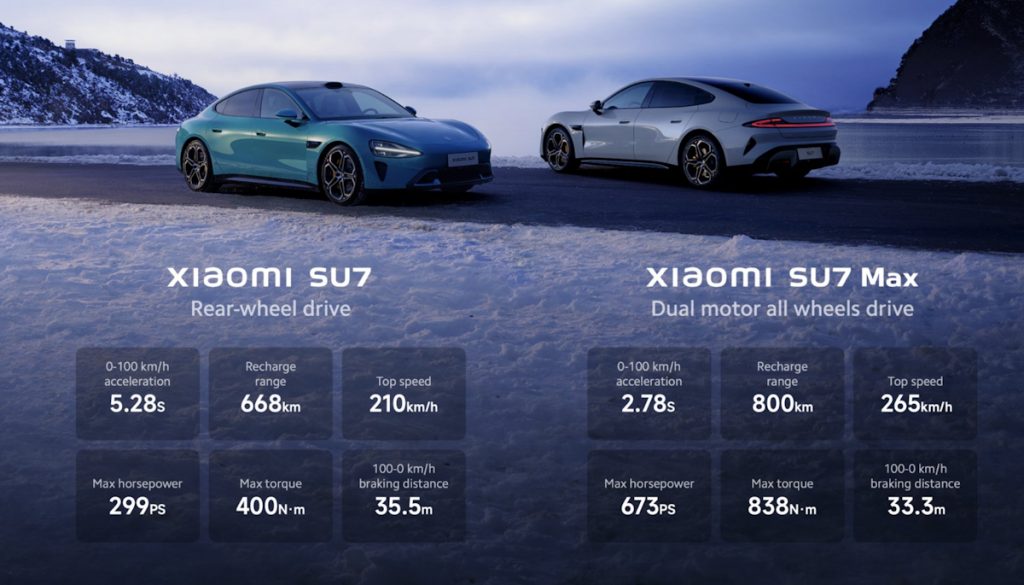
While there are no Brembo brakes on the standard SU7, its 100 – 0km/h braking range is still quite respectable at 35.5 meters. Powered by a 73.6kWh lithium iron phosphate (LFP) battery pack, the EV has a CLTC-rated range of 668km.
Unlike the Max variant, Xiaomi uses a 400V battery architecture for the standard SU7 though. The company also didn’t reveal the actual AC and DC charging rate that the variant can support although it can gain 330km of range in 15 minutes through DC fast charging.
Xiaomi SU7’s impressive exterior and interior features
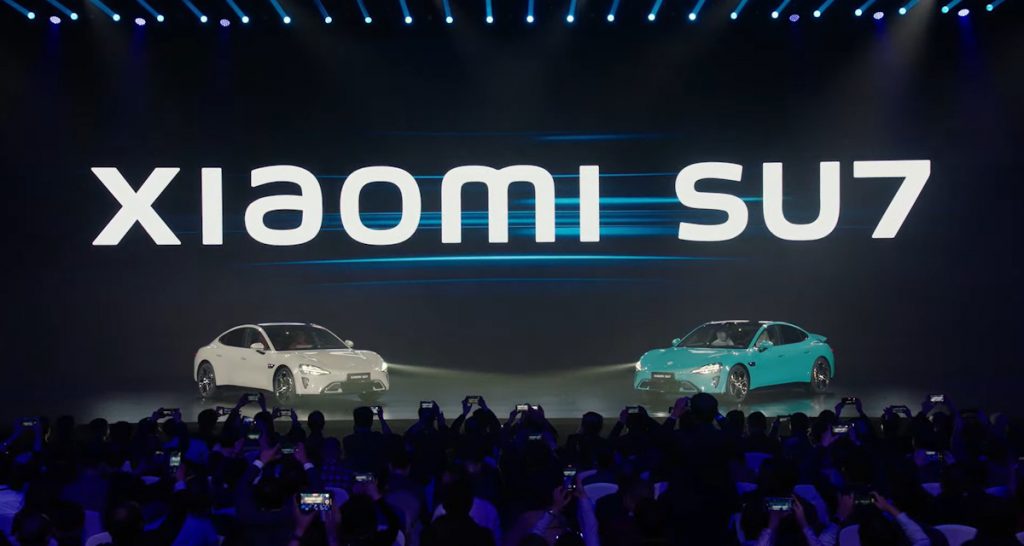
To be available in several different colourways including Aqua Blue, Mineral Gray, and Verdant Green, the sleek design of the SU7 is certainly not just for looks.
This is because Xiaomi claimed that its new electric sedan has a drag coefficient of just Cd 0.195. As a comparison, the drag coefficient of the Hyundai Ioniq 6 is much higher at 0.21 and the same goes for Porsche Taycan which starts from 0.22 onwards.
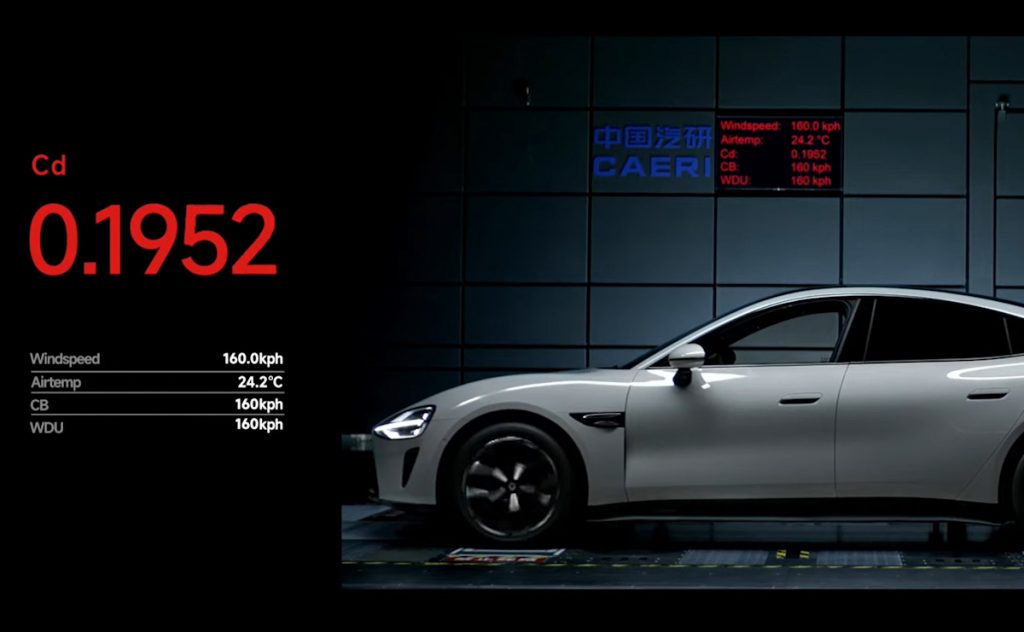
Xiaomi has also highlighted the massive frunk space of 105 litres on the SU7 family. Similarly, the EV has quite sizeable boot space as well at 517 litres.
Other notable features included with the new electric sedan are an air suspension system, adjustable sports seats with Nappa leather, and 7 airbags. The Max variant also comes with a 25-speaker sound system and Dolby Atmos support.
Xiaomi SU7 comes loaded with digital features
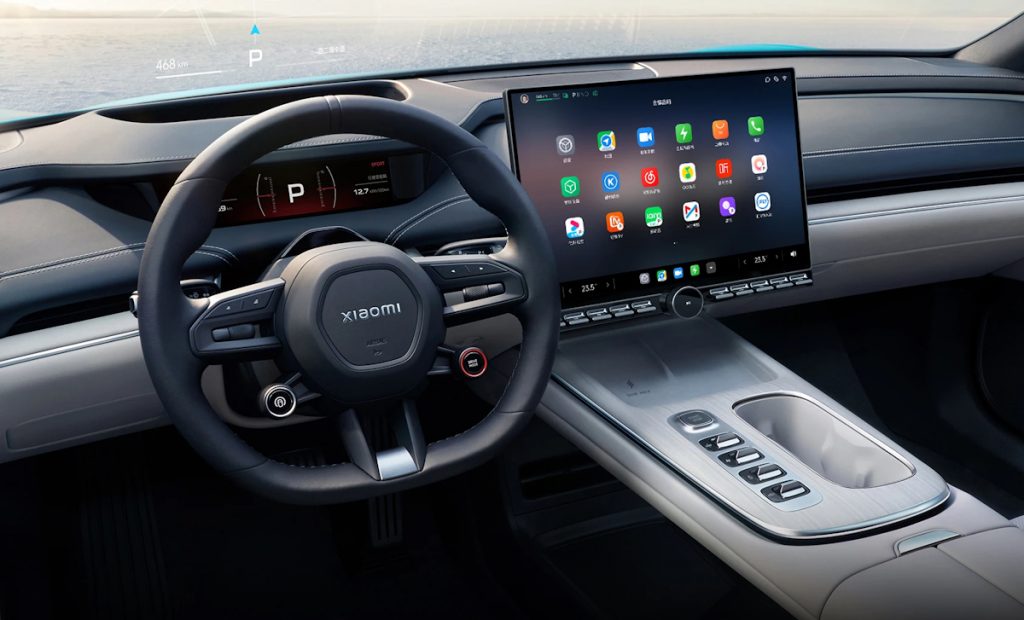
Being an EV that was partly inspired (or challenged) by Tesla, the Xiaomi SU7 is packed with digital features. For one, the infotainment system on the car is powered by Qualcomm Snapdragon 8295 and runs on Xiaomi’s own HyperOS.
Users can utilise it via a massive 16.3-inch touch display with a 3K resolution. There is also a rotating 7.1-inch digital instrument cluster while owners of SU7 Max will also have access to a 56-inch head-up display (HUD).
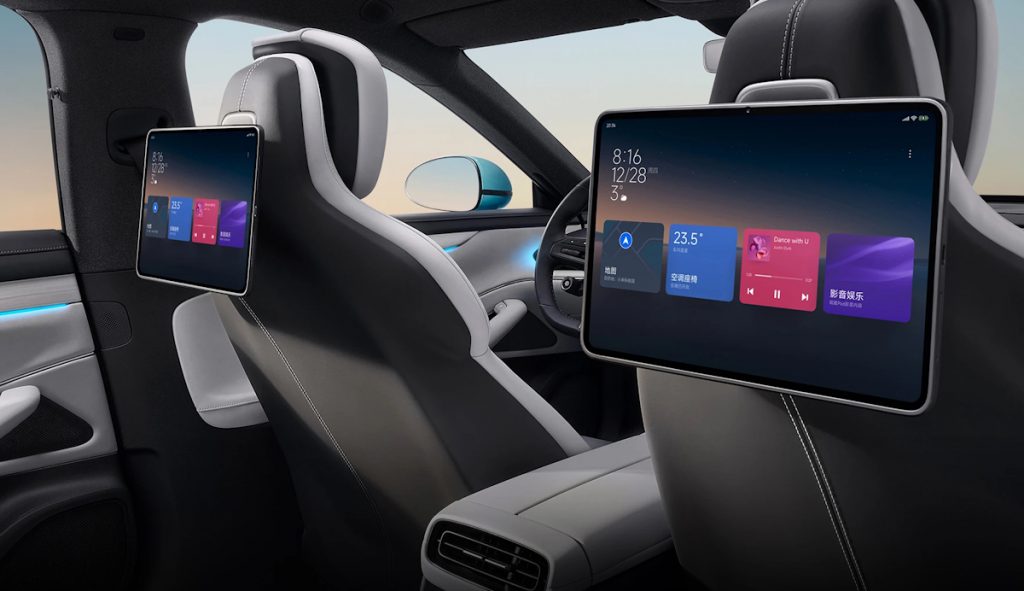
Through HyperOS, Xiaomi is also introducing the CarIoT ecosystem. This allows SU7 owners to easily add additional hardware to their EV such as a physical button module for the infotainment display, an aroma diffuser in the centre storage console, and up to two Xiaomi Mi Pad tablets for rear passengers.
In general, users will be able to see customised controls and notifications through their infotainment system when a CarIoT-supported product is installed in the SU7. The ecosystem is open to third-party developers and manufacturers, according to Lei Jun.
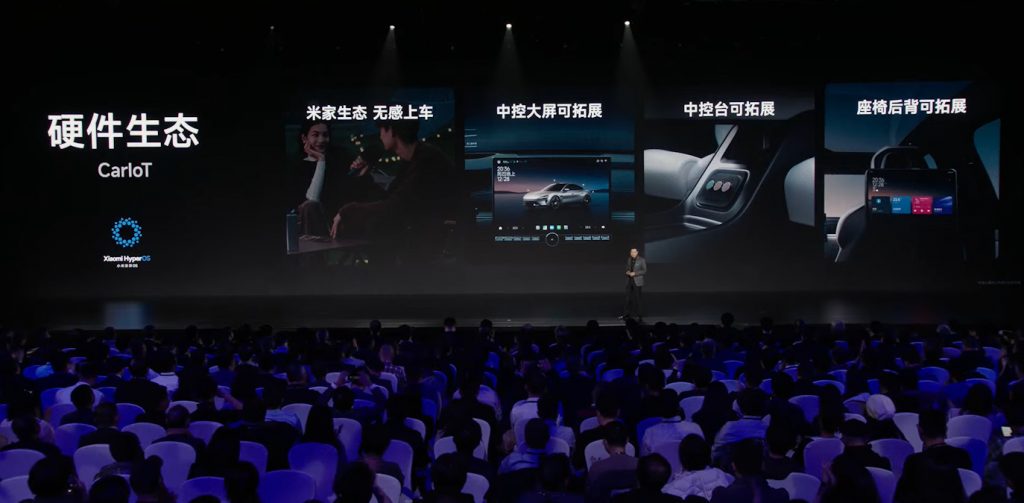
He also didn’t forget to address the Apple CarPlay support on SU7. The CEO has confirmed that the new EV will support Apple’s automotive features while rear passengers can even attach their iPads and will still be able to access customised controls just like the Mi Pad.
As you may expect, the new EV also comes with self-driving capability which is being delivered through an intelligent driving system called Xiaomi Pilot. On the SU7 Max, this system is powered by two NVIDIA Drive Orin processors alongside 11 HD cameras, 12 ultrasonic radars, 3 millimeter-wave radars, and a LiDAR camera module.
On the other hand, the standard SU7 variant runs on just one Orin processor. However, Xiaomi didn’t provide further details regarding the Xiaomi Pilot implementation on the standard variant.
While Lei Jun has revealed plenty of details about Xiaomi’s new SU7, the CEO stopped short of revealing the launch date and pricing for the new EV. Nevertheless, it has been previously reported that the SU7 is expected to be available in its native market of China sometime in February 2024.

